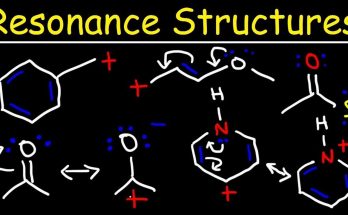In today’s dynamic business landscape, where competition for skilled professionals is fiercer than ever, the ability to attract and, more importantly, *retain* top talent has become a critical differentiator. It’s a strategic imperative that directly impacts innovation, productivity, customer satisfaction, and ultimately, a company’s bottom line. Losing a high-performing employee is not just about the cost of recruitment and training a replacement; it’s about the erosion of institutional knowledge, the disruption of team dynamics, and a potential competitive disadvantage. Therefore, understanding the multifaceted approach required to cultivate an environment where your best people choose to stay and thrive is paramount for sustainable success.
While competitive compensation and benefits packages are foundational, they are increasingly becoming table stakes rather than primary differentiators for retention. Top talent, especially those driven by purpose and professional growth, seek more than just a paycheck. They crave an environment that fosters development, recognizes contributions, and aligns with their personal values. This necessitates a holistic strategy that addresses various aspects of the employee experience.
One of the most significant drivers of retention is a robust culture of continuous learning and development. High-achievers are inherently driven to grow, acquire new skills, and tackle new challenges. Businesses that invest in their employees’ professional development – through training programs, workshops, mentorship opportunities, or even support for external certifications – demonstrate a commitment to their long-term career trajectory. This isn’t just about formal training; it’s about creating opportunities for stretch assignments, cross-functional projects, and exposure to different facets of the business. When employees feel their skills are being honed and their career paths are being nurtured, they are far more likely to see a future within the organization. Consider a software engineer who, through internal development programs, transitions from a coding role to a team lead, expanding their managerial capabilities. Such an investment creates loyalty and a vested interest in the company’s success.
Beyond development, recognition and appreciation play a pivotal role. Top performers are often intrinsically motivated, but external validation reinforces their value to the organization. This goes beyond annual reviews; it encompasses consistent, timely, and specific feedback that acknowledges their contributions, both big and small. Public recognition, performance-based bonuses, opportunities for leadership, or even a simple, genuine “thank you” from a senior leader can significantly boost morale and commitment. When employees feel seen, heard, and genuinely valued for their efforts, they are more inclined to reciprocate with loyalty and continued dedication. Imagine a sales professional who consistently exceeds targets not just being rewarded financially, but also being publicly lauded in company meetings or given opportunities to mentor junior colleagues – these non-monetary recognitions build strong ties.
Another crucial element is fostering a positive and inclusive work environment where employees feel a sense of belonging and psychological safety. This involves promoting open communication, encouraging collaboration, and ensuring that diverse perspectives are not just tolerated but actively sought out and respected. A toxic work environment, characterized by micromanagement, lack of trust, or discriminatory practices, will inevitably drive away your best people, regardless of compensation. Strong, empathetic leadership is key here. Leaders who actively listen, provide constructive feedback, champion work-life balance, and demonstrate genuine care for their team members create a culture where individuals feel supported and empowered. This also extends to providing flexibility where possible, understanding that modern employees value autonomy and the ability to integrate their professional and personal lives more seamlessly.
Effective communication is also paramount. Top talent wants to understand the company’s vision, strategy, and how their individual contributions fit into the broader picture. Regular town halls, transparent updates on company performance, and clear articulation of goals help employees feel connected to the larger mission. When employees understand the “why” behind their work, it instills a greater sense of purpose and commitment. Conversely, a lack of transparency or inconsistent messaging can breed uncertainty and disengagement, making employees more susceptible to external opportunities.
Finally, while culture and development are vital, the foundational elements of fair compensation and a robust benefits package cannot be ignored. These must be regularly reviewed against market benchmarks to ensure competitiveness. This includes not just salary, but also health insurance, retirement plans, paid time off, and other perks that contribute to an employee’s overall well-being. A high-performing individual who feels undervalued financially, even if they appreciate the culture, will eventually look elsewhere. The goal is to offer a comprehensive package that meets their needs and signals their worth to the organization.
In conclusion, retaining top talent is a continuous, multifaceted endeavor that goes far beyond simply offering a good salary. It requires a strategic and sustained investment in creating an environment where employees feel challenged, valued, respected, and empowered. By prioritizing professional development, fostering a positive and inclusive culture, providing meaningful recognition, maintaining transparent communication, and ensuring competitive compensation, businesses can cultivate a workforce that is not only productive and innovative but also deeply committed to the organization’s long-term success. In an age where human capital is arguably the most valuable asset, the ability to retain your best and brightest is truly the hallmark of a resilient and forward-thinking enterprise.



